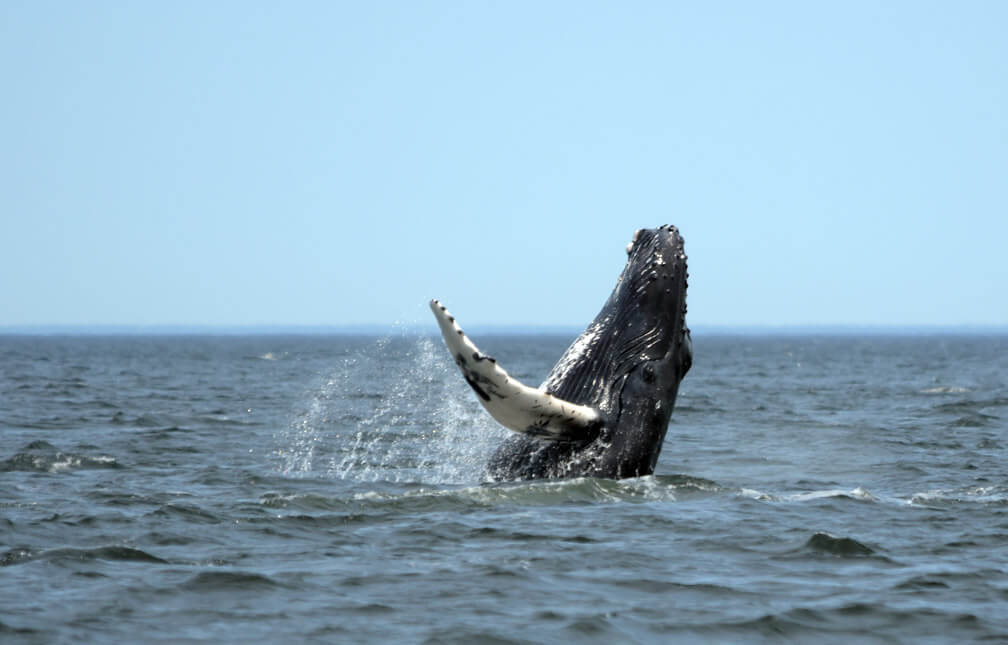Before heading south to more temperate climates, let’s take a brief look at sightings here in the St. Lawrence. Posted high up on Sept-Îles’ Marconi Peninsula, also known as Pointe Marconi, observer Jacques Gélineau spots a blue whale on February 3. Two days later, he sees it again. He also observes a few seals here and there as well as common mergansers, which are sometimes referred to as sawbills.
From the shores of Baie-Sainte-Catherine, a few harbour seals are noted on the drifting ice. From Sainte-Flavie, Sainte-Luce-sur-Mer and Gaspé, other seals can be observed lazing on the ice floes or chunks of ice. But there’s not a spout on the horizon to be seen. Most whales have left for the winter.
Humpbacks, for example, are now essentially off the coast of the Dominican Republic and Puerto Rico. They can be observed in large numbers in this part of their breeding range. After a gestation period of around eleven months, females give birth in January or February. Which means that right now, calves just a few weeks old are swimming alongside their mothers. Oftentimes, a male can be observed nearby. Nicknamed “escorts”, these bulls may be present to protect the calf from potential predators such as killer whales.
The calf will be nursed for five to ten months; however, it will remain with its mother for one or two years, which is rare amongst baleen whales. Thus, if the mother visits the St. Lawrence feeding grounds for the summer, it is possible that her young will also adopt these waters and become a regular of the Saguenay–St. Lawrence Marine Park like Tic Tac Toe or Gaspar.
A big first was filmed in Hawaii: the minutes preceding the birth of a humpback whale. We can see the calf’s tail emerging from the female’s genital slit. This video seems to show one of the stages of the birth.
In Florida, two North Atlantic right whales are spotted during aerial surveillance efforts. Another one is seen off the coast of Georgia. A total of nine calves have been tallied since December. Additional calves might yet be sighted before the breeding season for this species ends in late March. We hope so, as it would take about twenty calves to reverse the species’ decline.
Pregnancy in North Atlantic right whales lasts twelve months. The mother will usually nurse her calf for 6 to 7 months. If they visit the Gulf of St. Lawrence this summer, these calves should therefore be weaned or about to be weaned.
North Atlantic right whales are endangered and, as such, very closely monitored. In fact, few species are the focus of such intensive study. Having access to such an accurate count of the number of calves born is extremely valuable for research, as it allows researchers to identify trends. Scientists have noted, for example, that the interval between births by the same female has increased. One hypothesis is that the species’ prey have become more scarce, which would prevent females from being physically fit enough to carry a calf to term.





